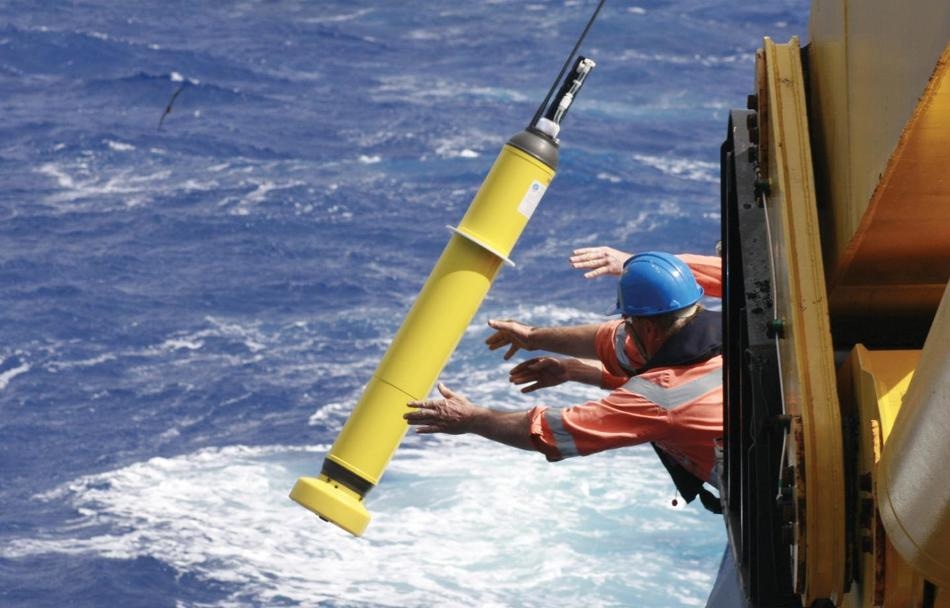Apr 19 2019
A study led by a team of top oceanographers in the world has put forward a new clarification for how the ocean absorbs and stores carbon, finding a solution to a mystery that has puzzled researchers for a long time.
 Argo float being deployed off a ship. Credit: CSIRO Alicia Navidad
Argo float being deployed off a ship. Credit: CSIRO Alicia Navidad
It is well known that carbon in the atmosphere is taken up by phytoplankton and carried to the ocean floor as the microscopic organisms die and get pulled down by gravity through the water.
However, scientists have found that this process—the biological gravitational pump (BGP)—cannot make up all of the carbon reaching the deep ocean, and also have investigated a series of other pathways that introduce a much broader variety of particles.
The review article published in the journal Nature, led by Institute for Marine and Antarctic Studies (IMAS) Professor Philip Boyd and including researchers from France and the United States, reports that the additional pathways called particle injection pumps (PIPs) introduce just as much carbon as the BGP.
Professor Boyd stated the study, based on a review of earlier research works and new modeling, could reform insights into how carbon reaches the seabed and what occurs while it is present.
Our study goes a long way to finally solving one of the real puzzles that oceanographers have grappled with for a number of years. The ocean stores huge amounts of carbon indirectly absorbed from the atmosphere and in doing so play a major role in moderating the climate impacts of anthropogenic carbon emissions. We can measure the sinking flux of carbon-rich particles and compare it with the gradient of dissolved inorganic carbon from low levels near the surface to high levels in the deep ocean. But until now we haven’t been able to ‘balance the books’ in explaining the mechanisms that transport and store carbon, as the BGP only explains around half of the carbon that is present.
Professor Philip Boyd, Institute for Marine and Antarctic Studies, University of Tasmania
According to Professor Boyd, new ocean observation technologies and the datasets they offer have revealed unparalleled detail in the way PIPs contribute to the carbon cycle.
PIPs are a range of physical and biological mechanisms that move carbon, including ocean eddies and zooplankton which feed on phytoplankton and excrete carbon-rich faeces as they migrate to deeper water. By combining the effects of the biological gravitational pump with PIPs we can, for the first time, balance the books and fully account for ocean carbon storage. This breakthrough is vital in allowing us to establish a baseline against which we can measure and understand future changes in ocean carbon and its effects on the global climate. It also highlights a number of areas that require further research, so we can better understand the mechanisms involved and their relative contribution to the ocean carbon cycle. The more we discover about the ocean the more we are coming to appreciate how complex and four dimensional it is, with multiple processes interacting and feeding back on each other over time. As the ocean is such a major influence on global climate it is vital that we improve our understanding of the multi-dimensional mechanisms at work.
Professor Philip Boyd, Institute for Marine and Antarctic Studies, University of Tasmania